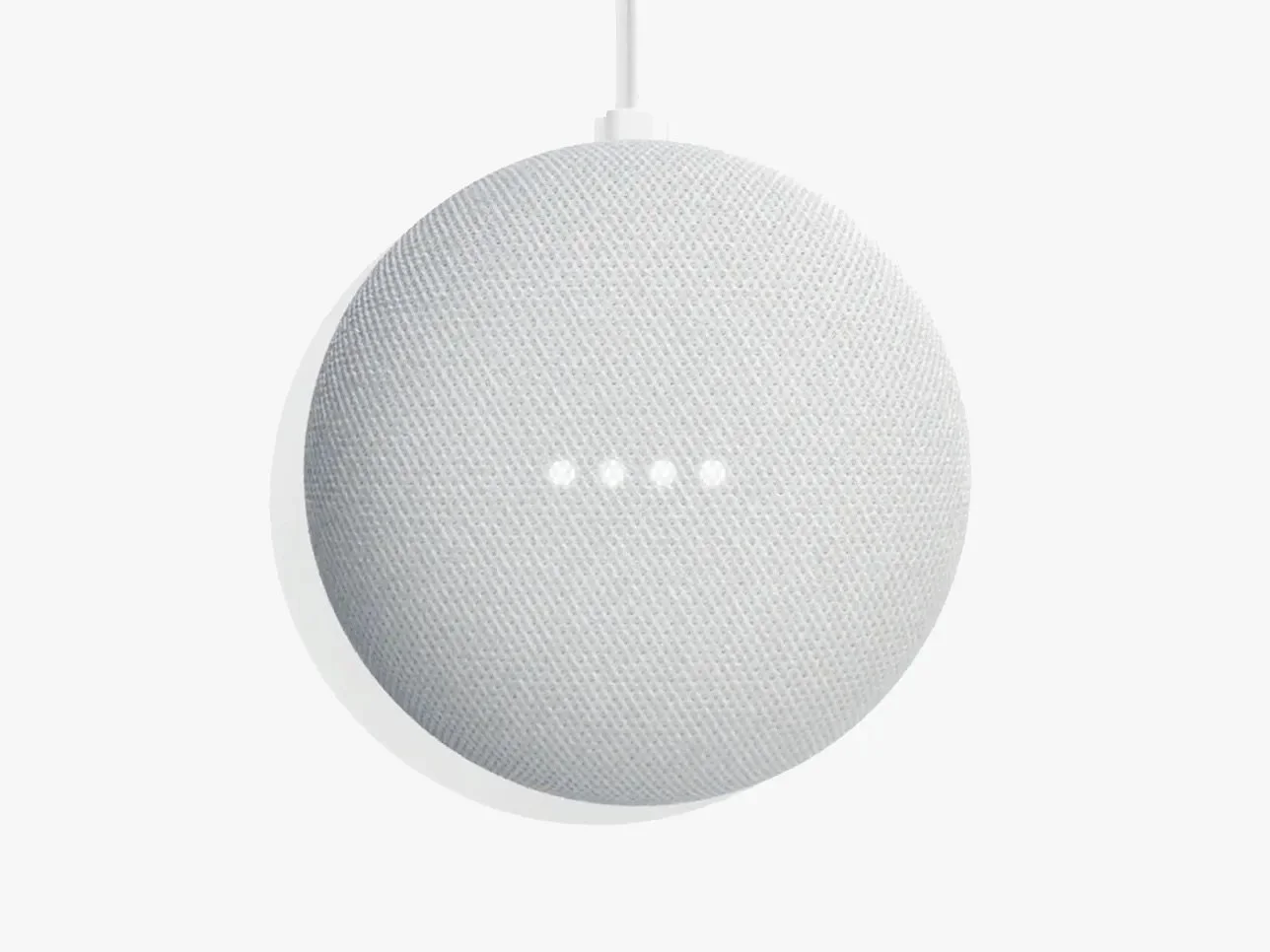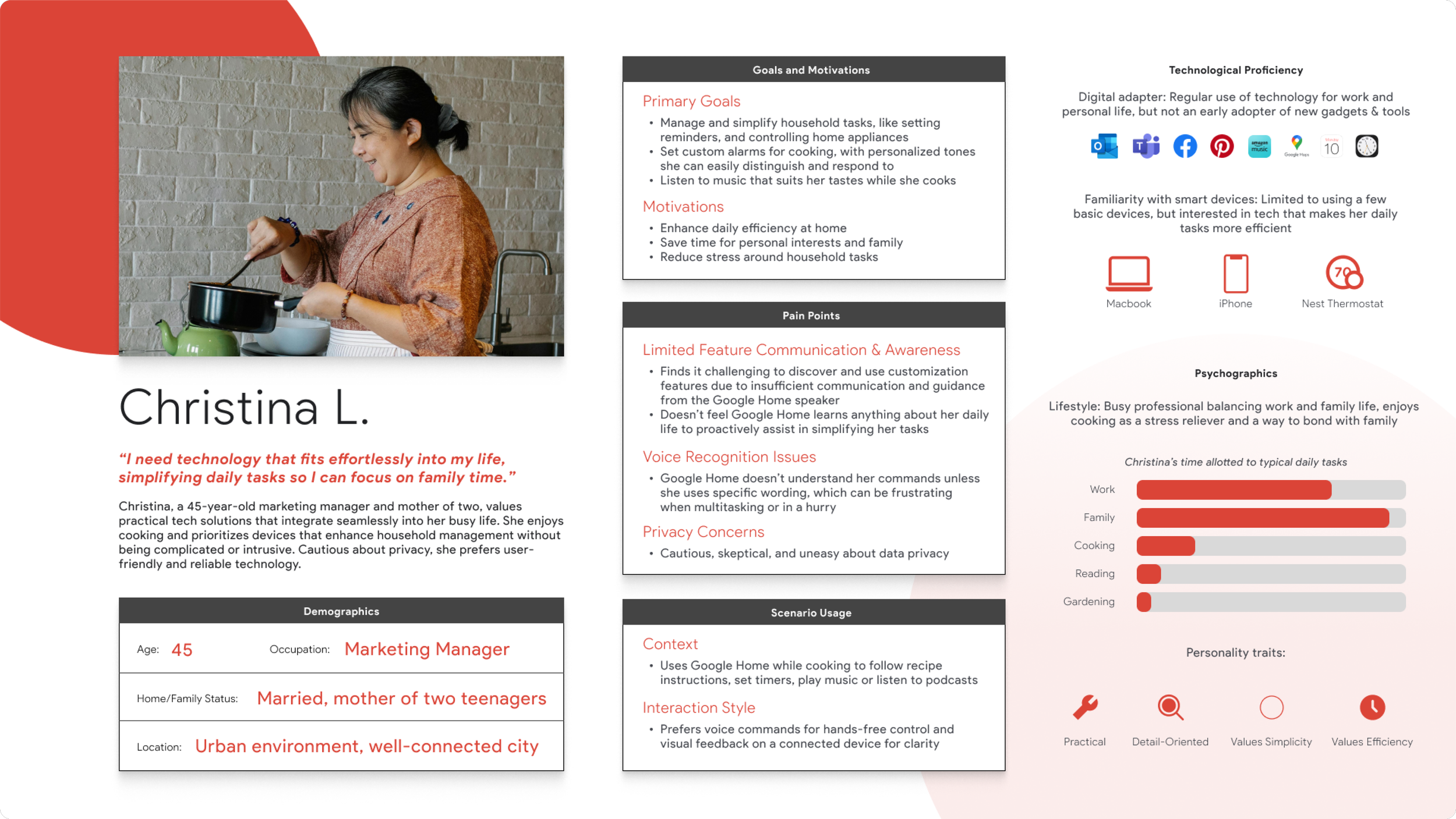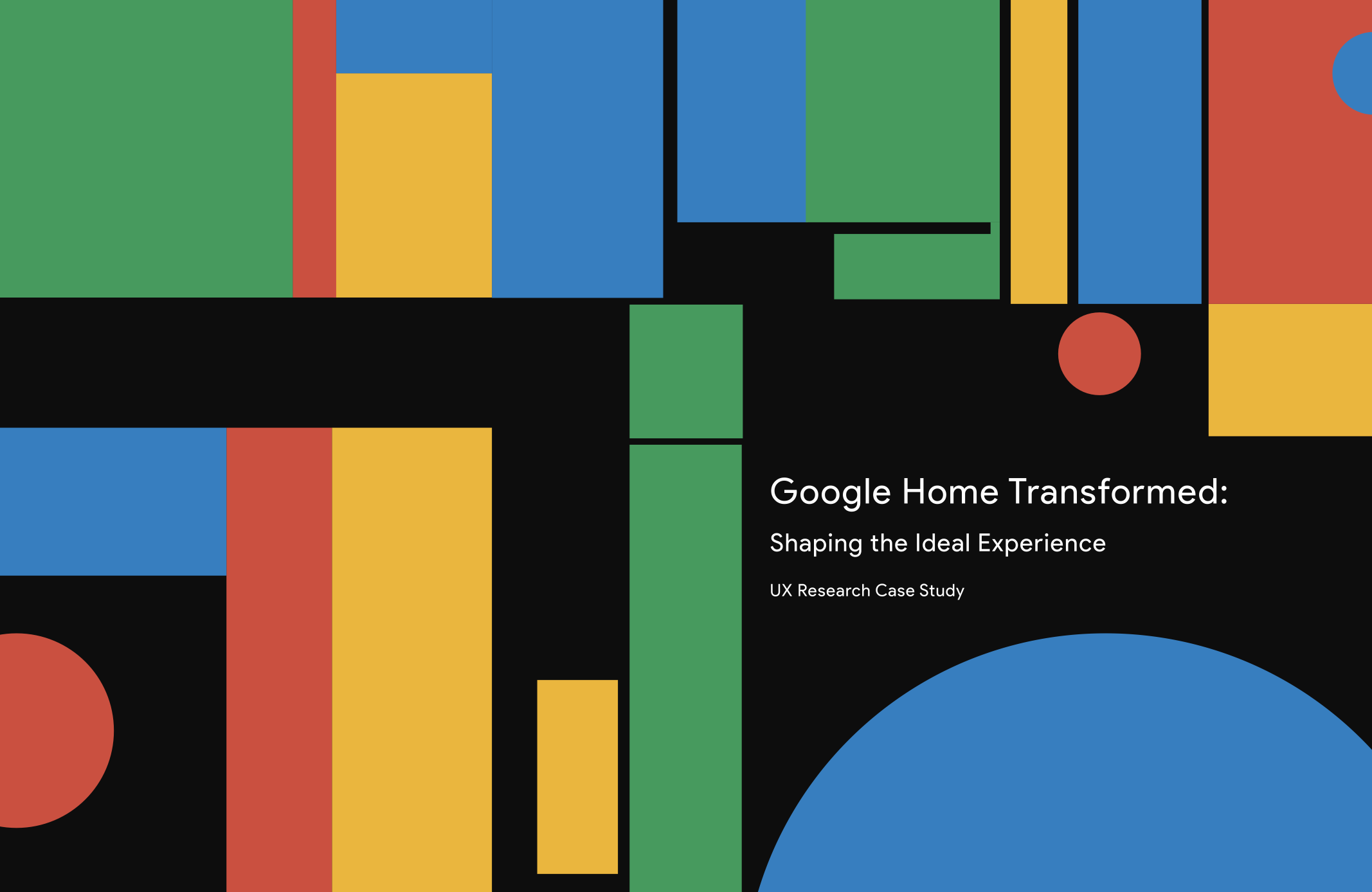
Google Home
Transformed
Shaping the Ideal Experience
80 New SUS Score
Prototype scored 80.0 (A grade) compared to the previous 40.0 (F grade)
The SUS score calculations were cross-examined with existing peer-reviewed usability studies, confirming that the initial score aligned with the same grade (F).
-80% Onboarding time
Previously, onboarding Google Home took an average of 17-25 minutes
The participants’ time expectations for setting up and personalizing the device were successfully matched to the original Google Home design, averaging 4-5 minutes. This time met or exceeded the average onboarding speed of competitors while offering significantly greater personalization.
100% (All Tasks)
Proactively offers suggestions
Google Home’s Assistant remained reactive to commands rather than becoming proactive over time. Users anticipated that the device would progressively become smarter after years of use, which it did not. With the addition of memory and recall, Google Home now proactively offers suggestions based on user habits and lifestyles.
Google’s Promise.
A home that takes care of tasks
A home that lights your way
A home that knows how to help
These 3 pillars were taken from the Google Home website landing page.
Does Google deliver on their promises?
Extensive secondary research on Google Home highlights key shortcomings in onboarding, personalization, and voice assistance. The onboarding process is overly complex, causing user frustration. Personalization features struggle to adapt effectively to individual needs. Voice assistance frequently fails to recognize commands or provide accurate responses. These issues inform targeted efforts to enhance the user experience
1 Onboarding
Users are frustrated by the lack of direct setup guidance from the Google Home speaker, relying solely on the app for instructions. The lengthy onboarding process causes impatience, while connecting to smart home devices often requires multiple attempts or troubleshooting, making the experience cumbersome
2 Personalization
Users find personalization for the Google Home speaker limited, with poor voice recognition and a complicated app that makes adjusting settings, routines, and integrating third-party devices frustrating. The lack of interactive feedback from the speaker itself further leaves users feeling unsupported during setup and personalization.
3 Voice assistance
Google Home struggles with voice recognition, often requiring users to repeat commands or use exact phrasing, making interactions rigid and frustrating. Its inability to handle complex or multi-step tasks, such as setting multiple alarms, and difficulties understanding diverse accents further detract from the user experience
Target Audience
This demographic values user-friendly technology and accessibility, making them ideal for targeted enhancements. Prioritizing their needs ensures the interface is approachable for less tech-savvy users while remaining intuitive for younger, more tech-comfortable audiences, creating a product that appeals to a wide range of users.
Gen X
Millennial
Millennial and Gen Z
Tech-curious and tech-savy,
active users
Older Millennial & Gen X
Tech-agnostic, passive users
Older Millennial & Gen X
Tech-reliant but not tech-savvy,
practical users
Understanding User Needs
Surveys and interviews were utilized to gather comprehensive insights for improving Google Home. Surveys reached a larger audience, collecting diverse quantitative data on user experiences and decision-making. This combined approach ensured a thorough understanding of user needs, guiding design improvements effectively.
Google Home is not proactive and it doesn’t learn from me
“It should read my planned calendar events for the day, say good morning, query me if I want the forecast and let me know if I have bills or emails to attend to.”
We would like it to talk to us during onboarding
“I would like it to interview the new owner and based off those answers, set up device; all verbal--no need for the Google home app.”
“I want the smart device to talk you through the process.”
Disappointed with the lack of technological growth over time
“I saw myself as an early adopter that would be playing the long-game... but I don’t feel like they got any smarter.”
Recruiting Test Participants
The focus is on improving Google Home for individuals less comfortable with technology, including older generations and those hesitant about AI assistants. Addressing the needs of this audience ensures a design that is accessible and adoptable, even for the most reluctant users. By making the device more approachable and reassuring, the goal is to enhance their experience and build confidence in using the technology.
Onboarding and connection
Where would you go to connect a smart light bulb to your Google Home app?
Current Google Home
Prototype
Problem: Personalization menu was difficult to navigate due to unintuitive categorization.
Discover the Solution
Explore our in-depth analysis and discover how we enhanced user interaction. Click to view the client book for detailed solutions and insights.













